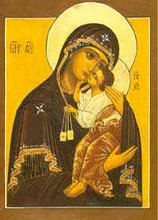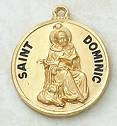A vein of theology infecting the Church today makes an attempt to discern who the "real" authors of the Gospels were and when they wrote. One of the claims is that the Gospel of Matthew, long considered to be the first Gospel (by Matthew, hence the name), was actually written after 70 AD by an author who was not a disciple of Jesus. This claim is based on the facts that Matthew and Mark are so similar to each other that one must have been copied from the other and the inclusion of the predicted destruction of the Jerusalem Temple in the Gospel of Matthew which did occur in 70 AD.
Papias, bishop of Heirapolis, who was a student of the Apostle John and a companion of Polycarp (also a student of John), wrote that Matthew was the first to record a Gospel in writing, which he did for the Israelites in the Hebrew language. Irenaeus, bishop of Lyon, wrote "Against Heresies" at the end of the Second Century. To the best of my knowledge that has never been disputed. In it he said:
Matthew published his gospel among the Hebrews in their own tongue, when Peter and Paul were preaching the Gospel in Rome and founding the church there. After their departure Mark, the disciple and interpreter of Peter, himself handed down to us in writing the substance of Peter's preaching. Luke, the follower of Paul, set down in a book the gospel preached by his teacher. Then John, the disciple of the Lord, who also leaned on his breast, himself produced his gospel, while he was living at Ephesus in Asia.
There is a lot of information we can glean about the dating of the Gospels from this writing. Peter and Paul were both martyred in 67, so we know that Matthew wrote his gospel before that date. Mark wrote his gospel after that year because the people of Rome loved Peter so much they insisted Mark record his teachings. It is plausible that Mark and Luke were writing their Gospels at the same time. John wrote his gospel sometime before 74 because that is when he left Ephesus. We must be able to assume the accuracy of Ireneaus's statements because of his proximity to the events. If one should question his accuracy by virtue of being recorded some one and a quarter century later, I will offer the example of Emily Dickenson as a response. She did not publish more than a dozen of her poems during her own life time, but today (122 years after her death), we know with strong authority that she wrote the poems generally credited to her based on our proximity to the event and the witness of persons close to her.
First let's establish the authority of the Epistle to the Romans. It is universally accepted without question that Paul is the author of this epistle. Eusebius, in "The History of the Church" dates Paul's execution to 67 AD, which is generally accepted as accurate. Paul makes four clear references to the Gospel of Matthew in his Epistle to the Romans. In Romans 9:5 Paul wrote "...theirs (the Israelites) the patriarchs, and from them, according to the flesh, is the Messiah." This statement is a reference to Matthew's genealogy of Jesus found in 1:1-16. Again, Romans 12:14 finds Paul exhorting the faithful to "Bless those who persecute, bless and do not curse them." This is exactly what Jesus said in the Sermon on the Mount found in Matthew 5:38-48. In Romans Chapter Two Paul entreats Christians to abstain from judgment of others and follow the path of a true disciple in the same manner Jesus did in the end of the Sermon on the Mount (7:1-5, 21-23). This is not an exhaustive list by any means, but it suffices to present the argument that the Gospel according to Matthew was written before the year 67, not after the year 70.
Philo was a Jewish philosopher from the city of Alexandria. Although he was trained in the Greek tradition, his emphasis was on the Jewish canon of Holy Scripture. Born in 20 BC he died in 50 AD. This is all significant to Matthew's Gospel because of one of the things Philo observed about the church in Alexandria:
They read the sacred scriptures, and study their ancestral wisdom philosophically, allegorizing it, since they regard the literal sense as symbolic of a hidden reality revealed in figures. They posses also short works by early writers, the founders of their sect, who left many specimens of the allegorical method, which they take as their models, following the system on which their predecessors worked.
Paul’s writings are universally given dates of authorship after the death of Philo, so we can exclude any of his writings from those Philo mentions. The Letter of James is concerned almost exclusively with moral conduct, not with allegorical interpretation, so it, likewise, may be excluded. 1 & 2 Peter are dated to the mid Sixties, also too late. All three of John's letters are given a date in the late First Century along with Jude. The Revelation to St. John is well known to be from the Apostle John while exiled on the Island of Patmos, so it may also be excluded from consideration of what Philo was referring to. That leaves us with the Gospel of Matthew, which fills the bill exactly, written by a founder of the sect with many specimens of allegorical interpretation!
Sunday, April 27, 2008
Subscribe to:
Post Comments (Atom)





No comments:
Post a Comment